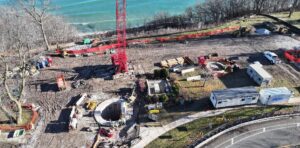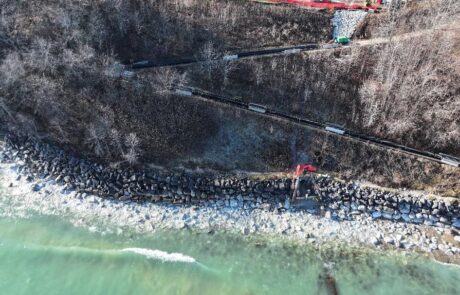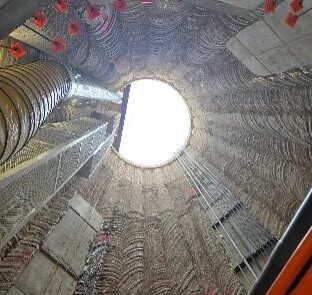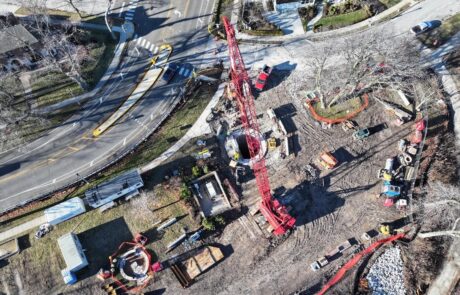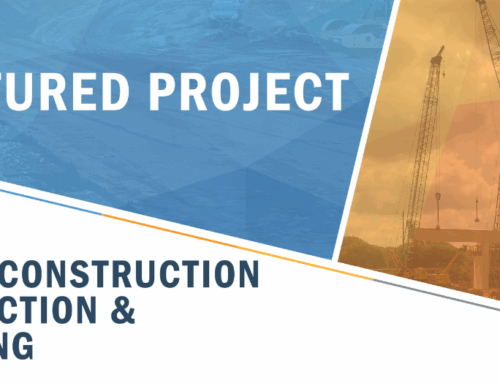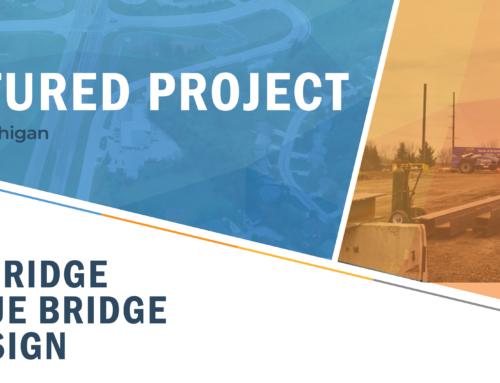What began as an ordinary June morning in Buckley Park, located in the Village of Whitefish Bay, WI, quickly turned into an emergency. A massive sinkhole opened up in the popular park overlooking Lake Michigan, drawing the attention of residents and media alike. At the root of the problem: a failed 54-inch storm sewer pipe—buried nearly 70 feet underground and critical to draining a 230-acre section of the Village.
With heavy rain in the forecast and public safety at risk, the Village of Whitefish Bay turned to Clark Dietz, Inc. to help stabilize the site and reestablish stormwater service. What followed was a textbook example of collaboration, innovation, and engineering performed under extreme pressure.

A Critical Piece of Infrastructure
The failed infrastructure was part of a regional trunk sewer system originally installed in 1926. The pipe, one of the deepest in the area, played a crucial role in conveying stormwater from 17% of the Village directly into Lake Michigan. When a manhole structure failed at the junction of this system, the resulting collapse left a gaping hole and left the entire community vulnerable—especially with rain predicted in the coming days.
Emergency Engineering in Action
Within five days, a temporary solution was in place. Clark Dietz worked side-by-side with contractors and Village officials to bypass the damaged section and restore flow. The interim solution, which came to be known for its clever use of “ratchet strap engineering,” involved over 200 feet of 36-inch fused HDPE pipe, 360 feet of corrugated HDPE pipe, dewatering systems, and other rapid-response materials and equipment.
This emergency fix not only withstood the test of incoming storms but also bought time for the community to plan a permanent solution without compromising public safety or the environment.
Planning for the Future
Clark Dietz is currently leading the design for the permanent reconstruction of the site. The $5-$6 million project includes:
-
Installation of a new drop structure and earth retention system
-
Concrete piles forming a robust structural foundation
-
Reconnection of key sewer components and lining of the outfall
-
Restoration of the park and surrounding impacted areas
Construction is targeted for completion in mid-2025, with a focus on long-term resilience and service reliability.

Lessons Learned
The Whitefish Bay emergency repair project highlights three critical insights:
-
Monitoring matters: Aging infrastructure can fail without warning. Routine assessment and proactive investment in inspection technologies are key to avoiding catastrophic failures.
-
Partnerships save time—and lives: Rapid coordination between the municipality, contractor, and engineers enabled a temporary solution within days.
-
Temporary solutions must be intentional: Even under pressure, the emergency response was strategic, safe, and built to last until permanent work could begin.
This story is a reminder of what’s possible when engineering meets urgency, and when the right people come together to protect our communities and infrastructure.
Questions about this project? Contact members of our project team for more –
